As space billionaires take flight, 'the right stuff' for space travel enters a new era
Billionaires are going to space. What does that mean for astronauts, and for the rest of us?
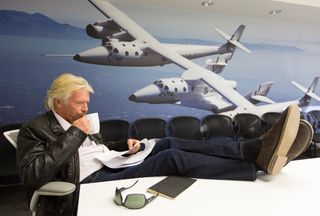
For perhaps the first time, the humans inside a spacecraft will — in a strict financial sense — be worth more than the vehicle itself, as billionaires take to the skies this month in a pair of historic suborbital spaceflights that mark a dramatic change in what it takes to become an astronaut.
On July 11, British business magnate Richard Branson will strap himself into the cabin of the spaceplane VSS Unity, along with three employees of his space tourism company Virgin Galactic. Just over a week later, on July 20, in a move timed to coincide with the 52nd anniversary of Americans first landing on the moon, Amazon founder Jeff Bezos will climb into a New Shepard capsule as a passenger on the first crewed flight conducted by his company, Blue Origin.
Neither flight will last long — each billionaire will slip out of gravity's clutches for a scant handful of minutes. But taken together, the two jaunts into suborbital space may usher in a new era of spaceflight and spaceflyers alike.
"I think the definition of 'astronaut' is up for grabs again right now," Jordan Bimm, a space historian at the University of Chicago and the Smithsonian Institution's National Air and Space Museum, told Space.com. "What isn't changing is that space remains an incredibly elite space. It's just a different pathway there."
And however the idea of an astronaut changes moving forward, the role will retain flavors of the astronauts who have flown to date, affected by both the military aura of the Cold War astronaut and the scientific agenda of the space station researcher, he said. "It's not like it sheds those identities each time," Bimm said. "It builds on them, like an extra coat of paint on an old wall."
Related: How to watch Virgin Galactic launch Richard Branson to space
Photos: The first space tourists
A slow trip to space
For both billionaires, the path to space began more than a decade ago, when each already-established entrepreneur founded a company aimed at spaceflight.
Get the Space.com Newsletter
Breaking space news, the latest updates on rocket launches, skywatching events and more!
Branson founded Virgin Galactic in 2004, and the company has always focused on suborbital passenger flights of a piloted space plane launched from a larger carrier plane. The first commercial flight was originally targeted to occur as early as 2008, but the company faced a host of delays, including a fatal accident in 2014.
Virgin Galactic only flew its first passenger, the company's chief astronaut instructor Beth Moses, in 2019. Since then, the company's plans for launching a full cabin of passengers have again faced delays. But Branson has made no bones about planning to be on Virgin Galactic's first operational trip, saying as early as 2013 that he intended to be on the flight.

Bezos kept his flight intentions quieter, although he's long spoken publicly about watching the Apollo moon landing in 1969 and wanting to visit space himself. He founded Blue Origin in 2000, and the company's vision began with vertical launches on a reusable rocket to suborbital space. (The company has since announced a planned orbital system as well.)
Blue Origin had dreams of launching commercial suborbital flights perhaps as early as 2010, but has so far stuck to 15 uncrewed launches, including one during which company employees rehearsed entering and exiting the capsule but were not on board during the flight.
Although Branson and Bezos will be the first to have funded the vehicle they will fly on, they won't be the first to buy their way into space. Seven passengers hitched rides to the International Space Station aboard Russian Soyuz capsules in the 2000s on flights booked through Space Adventures, a Virginia-based space tourism company. The trips, which cost tens of millions of dollars, included a weeklong stay on the orbiting laboratory and meant facing the indignities of trying to sleep and use the toilet without the help of gravity.
Branson's and Bezos' brief suborbital jaunts will be very different, but they'll need to contend with some of the same hubbub that surrounded those tourism flights about who gets to be an astronaut and what makes an astronaut.
Related: Richard Branson says he isn't racing Jeff Bezos into space with Virgin Galactic launch
Who has 'the right stuff'?
Americans have loved astronauts for almost as long as there have been American astronauts, and our idea of an astronaut begins with human spaceflight itself, in the era of the American-Soviet race to space in the late 1950s.
As the United States began its astronaut program, leaders considered a few different models of astronaut. When the Air Force was briefly in charge, it considered sending desk jockeys into orbit, Bimm said, and even NASA briefly opened astronaut applications to everyone, according to Matthew Hersch, a space historian at Harvard University, before limiting the role to military aviators.
And in that first group of astronaut selections, NASA had to face the reality that it didn't know what characteristics would make a successful astronaut.
Related: Will Richard Branson actually reach space on Virgin Galactic launch?
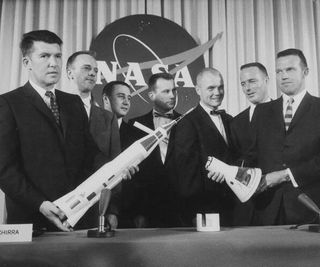
"One of the dirty little secrets of the Project Mercury selection is that the examinations that were undertaken of prospective astronauts were invented just for that selection," Hersch said. "Mostly, the purpose that they served was to test people's willingness to put up with a lot of nonsense in order to be an astronaut."
Once selected, that first corps of test-pilots-turned-astronauts found themselves, with NASA's help, with the power to shape American perception of spaceflight. And they used that power to cling to the position, Hersch said, "recognizing that if anyone can be an astronaut, being an astronaut doesn't really mean anything anymore," and fearing that the public would realize the astronauts "had been lucky enough to be selected, but they weren't particularly special."
As part of the effort to retain their position, the early astronauts fought for NASA to give pilots more control of the spacecraft, rather than taking advantage of opportunities offered by automation. "Having average people flying into space was completely unthinkable, and astronauts were horrified by the thought that the future iterations of human space vehicles in the United States might be so completely automated that the pilot wouldn't really have anything to do at all," Hersch said.
Meanwhile, NASA and the rest of the government was also doing image work for the astronauts within the Cold War context of the space race, identifying them with "a particular kind of American masculinity that was to do with families, it was to do with patriotism, to do with belief in God," Dario Llinares, a cultural theorist at the University of Brighton in the U.K. who has analyzed the portrayal of early astronauts, told Space.com.
The stars-and-stripes, all-American vision was key, he added. "The kind of narrative that you see in the Western media is this antagonism between the way of life of Soviet communism and how that was portrayed negatively even in terms of being evil in comparison to Western freedom, and all of that kind of thing."
Related: From Yuri Gagarin's launch to today, human spaceflight has always been political
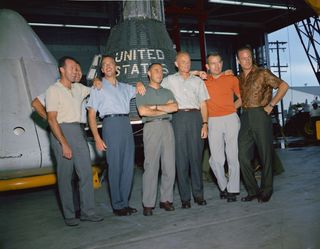
Take their military backgrounds, add the active spaceflight role they insisted upon, then consider NASA's careful media management strategy, and you get the astronaut recipe referred to as "the right stuff": a vision of a down-to-Earth yet swashbuckling, mythologized, middle-class American man triumphant in the face of possible death.
It's perhaps not a coincidence that the Cold War space race fostered such a powerful vision of the astronaut, since the entire endeavor was about perception, according to Teasel Muir-Harmony, a space historian and curator at the Smithsonian Institution's National Air and Space Museum.
"One of the very essential parts of the early space race was this idea that sending humans to the moon or setting that type of goal would win the hearts and minds of the world, and that this was essential for geopolitical power," she said. "The audience was such an essential piece of that puzzle."
New types of astronauts take off
But spaceflight today isn't quite trapped in the 1960s. By the end of the Apollo moon missions in 1972, the astronaut program was beginning to shift its focus to science, and NASA sent a geologist to the moon on the final flight.
As the agency prioritized long-duration spaceflight in low Earth orbit over exploration, NASA continued to broaden the role of an astronaut, recruiting a range of scientists to join the aviators. The space shuttle program that flew from 1981 to 2011 in particular allowed those with minimal flight training — even a precious few non-agency personnel, such as Sen. Bill Nelson (D-Fla.), who is now NASA administrator — to fly and widened the perception of who could reach space, even as astronauts remained an elite corps.
"One thing that sustained the space shuttle program was, because it was a U.S. government-run space vehicle, it was plausible for people to believe that no matter who they are and how much money they had, they might themselves have an opportunity to fly in space in some kind of context," Hersch said.
It's into that landscape that business models of private spaceflight and the figure of the space tourist launched in the early 2000s. When those seven wealthy individuals made their way to the space station, their flights spurred additional controversy about what it meant to be an astronaut.
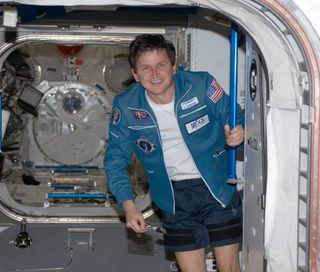
"There was a lot of debate about whether they should be called astronauts or space tourists and as a group, they all really rejected the term space tourist," Erika Nesvold, an astrophysicist and co-founder of the advocacy group the JustSpace Alliance, told Space.com.
"I think that's because the term astronaut has such an elite position, but in a really beloved sort of way, which is kind of unique in our society," she said. "There's a certain amount of anti-elitism such that people don't all uniformly love celebrities, or athletes, or whatnot, or politicians certainly — but a lot of people just love astronauts."
The terminology of astronaut is still contentious, as is the difference that private companies will truly make when it comes to access to space. Tickets for Virgin Galactic flights have sold most recently for $250,000; Blue Origin has yet to announce a list price, but the one seat on the July 20 flight it sold went for $28 million at auction.
"While space billionaires often try to sell their efforts as 'making space more accessible' to people, they aren't really changing anything about accessibility," Lucianne Walkowicz, an astrophysicist at the Adler Planetarium in Chicago and co-founder of the JustSpace Alliance, told Space.com in an email.
"For middle-to-upper-class white men, space has always been relatively accessible (after all, that's who the original astronaut selections were meant to target, to the exclusion of everyone else)," they wrote. "Wealthy people paying their way into exclusive, difficult-to-access spaces is as old as time. Tying spaceflight to wealth further emphasizes that space is yet another playground of the rich."
And while Bezos perhaps set out to right an old wrong by offering a seat to aviator Wally Funk, one of the so-called "Mercury 13" women who passed the same qualifying exams as the first American astronauts but were excluded from the corps, the JustSpace co-founders say gestures like this don't address the core issue.
"That just puts us in a world where we poor people, we non-billionaires, only get to go to space at the pleasure of the rich," Nesvold said. "That's not a solution, either."
The shine of spaceflight
Just as the perception of who can become an astronaut is perhaps expanding faster than spaceflight opportunities, grazing space will perhaps do more to society's view of Branson and Bezos than the flights will do to increase access to space.
"Space became a place where the astronauts were able to craft and hone their public image, and their celebrity was a chance to create a persona," Bimm said of the Mercury astronauts, and he suspects the same will be true for the space barons.
"I believe they are going to kind of bask in a bit of that aura that isn't really applicable to them," he said. "It's going to be a bit of a crucible moment where they can kind of burn away some stuff they don't want and sort of reinvent themselves. Will the Jeff Bezos that comes back from his six minutes in space be the same Jeff Bezos that went up? Of course, but he might be telling a different story, or he might be focusing on new things and claiming a transformation."
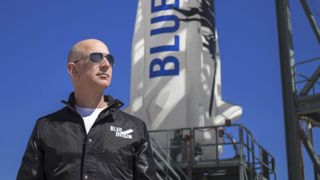
That said, the Mercury astronauts earned their celebrity through their spaceflight, whereas for Branson and Bezos one brief spaceflight can only go so far to change existing public images, Llinares said. "They already have a narrative that is non-astronaut-based; how we conceive of Branson and Bezos and [SpaceX founder Elon] Musk has to be seen through that first."
Bezos' announcement that he would fly was, notably, met with a host of quips about how perhaps he could simply stay in space if he wanted to go there so badly. Branson, meanwhile, has a long history of taking on adventurous attempts at firsts and records in his own activities, even as he has overseen the Virgin business empire.
And it's difficult to imagine seeing either man after spaceflight without considering how they built the commercial empires that have funded their paths to launch. Of course, that too has deep roots in the space race, itself a would-be allegory for political and economic systems.
"The space feats were supposed to symbolize not only the strength of a democratic society, but also the robustness of the American capitalist system in opposition to the Soviet communist system," Muir-Harmony said. "I think that today it's part of what these flights symbolize as well, and perhaps in a less shiny way."
And even as Branson and Bezos race each other to the edge of space, it's worth noting that neither man's company is quite doing something unprecedented, historians said. "Sixty years ago, without the benefit of tech entrepreneurs and without the benefit of computers, Americans organized to accomplish this feat and did so marvelously," Hersch said, referencing Alan Shepard's own suborbital flight in 1961, which occurred just weeks after the Soviet Union's Yuri Gagarin made the first-ever spaceflight and which is, of course, the namesake of the Blue Origin suborbital program.
"The United States has a tremendous tradition of people taking their money and doing really inventive, interesting things with it, and I really support that," Hersch said. "But as a historian, I always try to put these sorts of things into perspective, and I think, well, it's great that people are spending a ton of money to do something that NASA did in 1961."
Email Meghan Bartels at mbartels@space.com or follow her on Twitter @meghanbartels. Follow us on Twitter @Spacedotcom and on Facebook.
Join our Space Forums to keep talking space on the latest missions, night sky and more! And if you have a news tip, correction or comment, let us know at: community@space.com.

Meghan is a senior writer at Space.com and has more than five years' experience as a science journalist based in New York City. She joined Space.com in July 2018, with previous writing published in outlets including Newsweek and Audubon. Meghan earned an MA in science journalism from New York University and a BA in classics from Georgetown University, and in her free time she enjoys reading and visiting museums. Follow her on Twitter at @meghanbartels.
